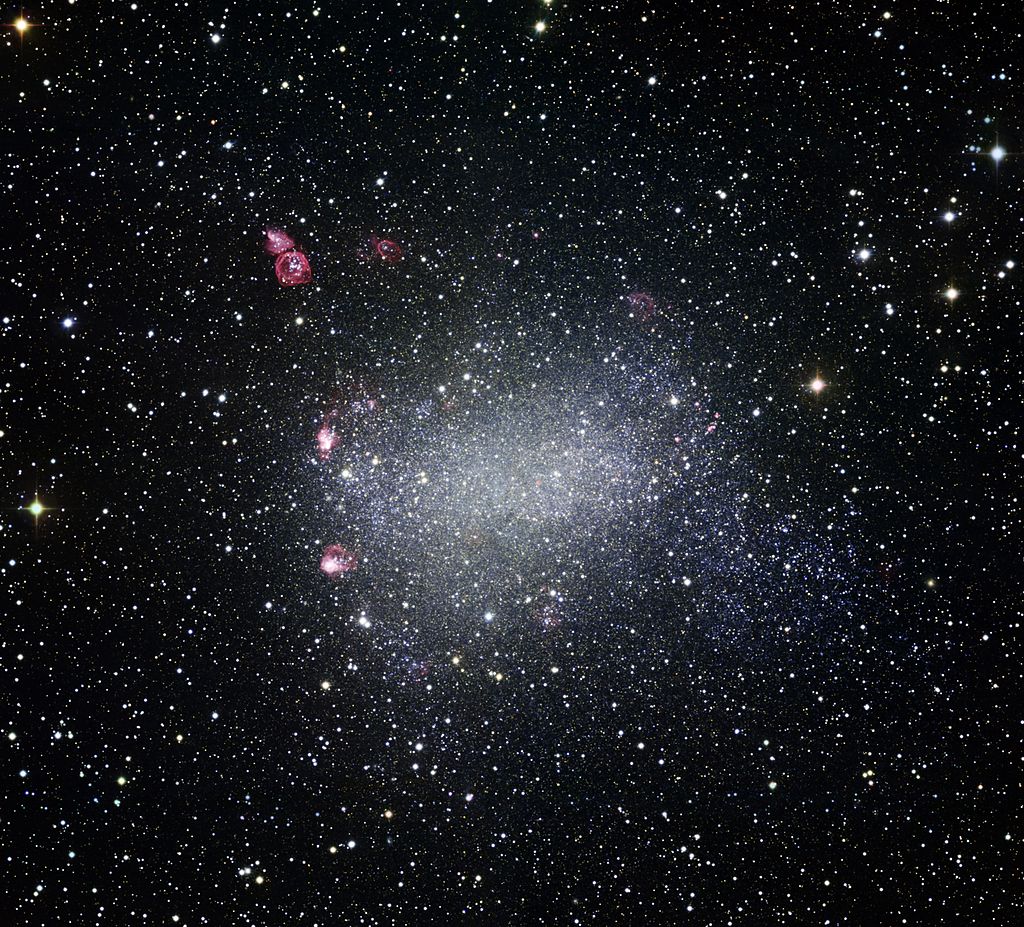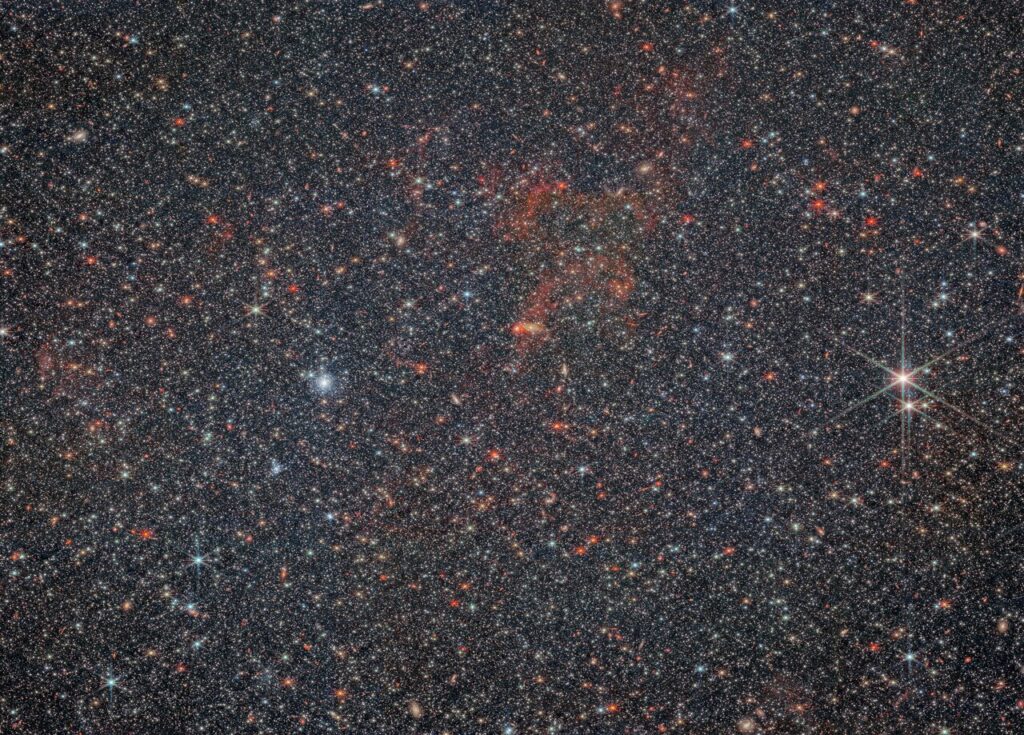Astronomers working with the James Webb Space Telescope (JWST) have published a new image. It shows the irregular galaxy NGC 6822, also known as the Barnard galaxy.
“Historical” neighbor of the Milky Way
NGC 6822 is one of the Milky Way’s closest neighbors. It is located at a distance of 1.6 million light-years from Earth in the direction of the constellation Sagittarius. At one time, NGC 6822 played an important role in the history of astronomy. In 1925, Edwin Hubble, based on observations of cepheids and bright diffuse nebulae, determined that it was located at a distance of more than 700 thousand light-years from the Milky Way.

Thus, NGC 6822 turned out to be the first object, other than the Magellanic Clouds, for which “extragalacticity” was proved. This happened in an era when it was not yet clear that other galaxies were outside the Milky Way, and the size of the entire Universe was determined by some astronomers to be only 300 thousand light-years.
Image by James Webb
JWST photographed NGC 6822 using a NIRCam camera. It works in the near infrared range. Since infrared radiation passes through the gas-dust clouds filling the galaxies, NIRCam allows studying stars that are inaccessible to ground-based telescopes.

The photo clearly demonstrates the power of JWST tools. We can see a huge, dense field completely filled with the stars that are part of NGC 6822. The brightest of them have pale blue and cyan colors, corresponding to the shortest wavelengths of light that NIRCam can register: red and near infrared. The amount of light emitted by any star decreases as the wavelengths increase, so the weaker stars for NIRCam seem to be more “warm”. The bright blue ball especially stands out to the left and below the center of the image. This is a globular cluster. Such objects are mostly inhabited by old and cold stars.
In addition to the stars, the image also showed translucent red filaments consisting of dust and gas. They are also part of NGC 6822. Numerous background galaxies of various shapes and sizes are visible behind the stars.
Earlier we talked about how James Webb saw the formation of the very first galaxies in the Universe.
According to https://esawebb.org
Follow us on Twitter to get the most interesting space news in time
https://twitter.com/ust_magazine
